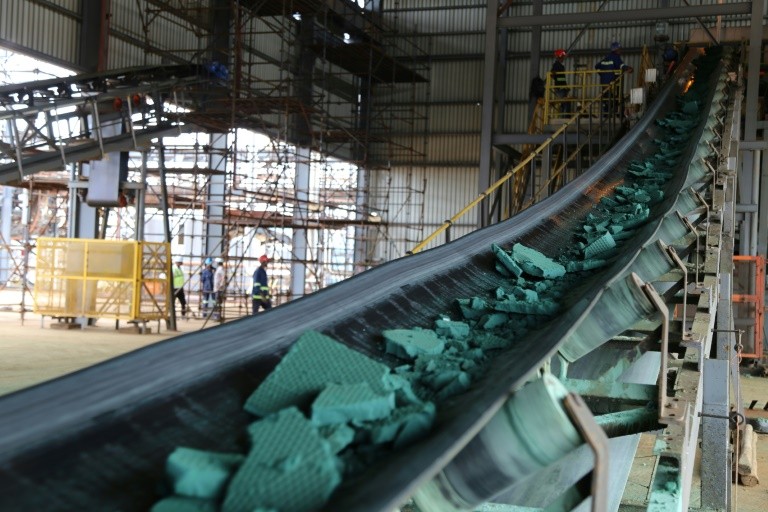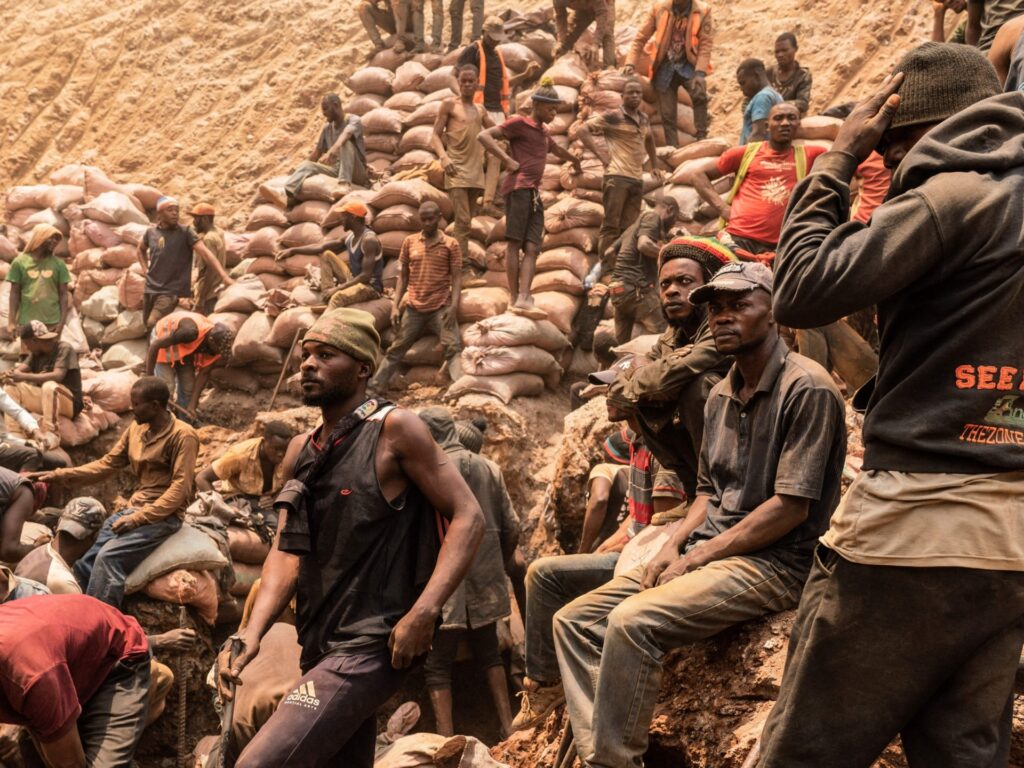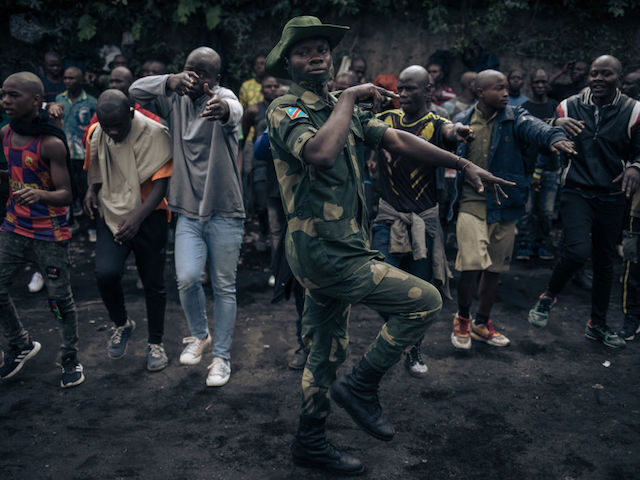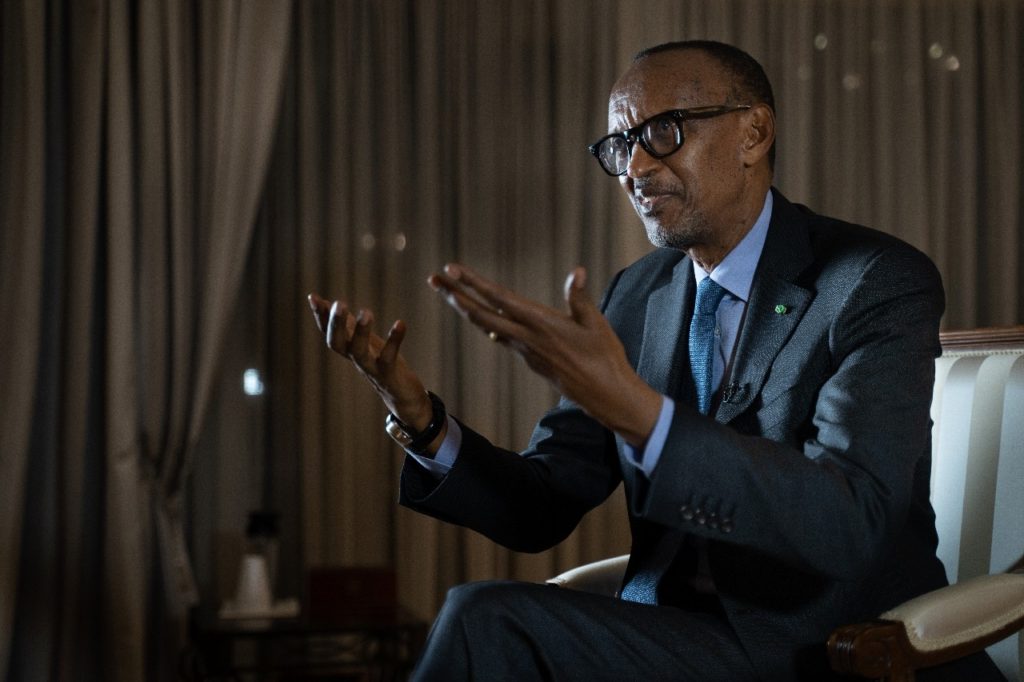The United Nations prepared a troubling report on the insurgency in the Democratic Republic of Congo (DRC) this week, warning that the conflict is intensifying and putting more civilians, including children, at risk of abduction, rape, and torture. Unfortunately for the Congolese, the international community turns a blind eye to much of what happens in the eastern Congo because it is the world’s primary source of cobalt, which is in heavy demand by the almighty electric vehicle industry.

Raw cobalt at a processing plant in Lubumbashi. Demand for the mineral, especially in China, has sparked a surge in illegal mining in DR Congo. (AFP/File SAMIR TOUNSI)
Voice of America News (VOA) saw the 21-page document on Tuesday, although it has not been officially released yet. The report included interviews with over 230 sources, and U.N. investigators visited the DRC’s conflict-torn North Kivu province.
There are many armed factions fighting for turf in the Congo, but as VOA noted, the most abusive and dangerous of them is the March 23 Movement or M23, a vicious insurgency with roots stretching back into the bloody regional tribal conflicts of the 1990s.
M23 emerged from a decade of relative dormancy in 2021 and began seizing territory in the eastern DRC, quickly supplanting the Islamic State and its affiliates as the worst regional security threat.
The U.N. report noted M23 is extraordinarily brutal toward civilians in the towns it controls, especially when the paranoid insurgency thinks they might be cooperating with its enemies:
In late 2021, the reactivated M23 began killing civilians and capturing swaths of territory. M23 fighters raped and harassed women trying to farm family fields in rebel-controlled areas, according to the report. The rebels accused civilians of spying for the Congolese army, the report said, and often incarcerated them and, in some cases, beat them to death.
Populations living under M23 not only are subject to abuse but are forced to pay taxes, the panel said. At the Bunagana border crossing with Uganda, the rebels earned an average of $27,000 a month making people carrying goods pay as they entered and left the country, the U.N. said. Two locals living under M23 who did not want to be named for fear of their safety told The Associated Press they had been forced to bring the rebels bags of beans, pay $5 if they wanted to access their farms and take backroads if they wanted to leave the village for fear of reprisal.
In early December, a U.N. investigation accused M23 of massacring at least 131 civilians in two North Kivu villages. The U.N. described the killings as “reprisals” against civilians M23 accused of supporting its rivals.
The confirmed victims included 17 women and 12 children, but there could be more – the atrocity was difficult to investigate because the area is so dangerous, and M23 made an effort to destroy the evidence by burning the bodies of its victims.
M23 really does have enemies and rivals who can match its brutality, including ISIS and its affiliates. The ISIS-aligned and grotesquely named Allied Democratic Forces (ADF), for example, have murdered at least 370 civilians since April and kidnapped hundreds more as slaves, including children.
Another gang fighting for a piece of the Congo is the Democratic Forces for the Liberation of Rwanda (FDLR), a militia founded by ethnic Hutus who fled across the border after perpetrating the infamous 1994 Rwandan genocide and subsequently losing the Rwandan civil war.
M23 is heavily populated with Tutsis, the victims of the genocide, and often claims to be protecting ethnic Tutsis against groups like FDLR, which dreams of overthrowing the current Rwandan government and returning to power. There is little doubt that the Rwandan government supports M23, and has even fired upon Congolese troops to protect it, while Rwanda accuses the DRC of supporting the FDLR in a bid to topple long-standing Rwandan leader Paul Kagame.
The U.N. report found M23 guilty of forcing children into service as soldiers. The FDLR and just about every other armed group in the DRC use child soldiers as well. The practice is so common that human rights activists have trouble counting the number of children pressed into military service. The U.N.’s best guess last year was 470 child recruits, 50 of whom were killed. The Swahili word kadogo, meaning “little one,” is commonly used to refer to the ubiquitous underage recruits.
VOA quoted Save the Children’s description of the escalating humanitarian crisis in the DRC:
The fighting is exacerbating eastern Congo’s dire humanitarian crisis. Almost 6 million people are internally displaced in Congo, with more than 450,000 displaced in North Kivu province, since clashes escalated in February. Hundreds of thousands are facing extreme food insecurity, and disease is spreading, aid groups say. Cholera cases are spiking in Nyiragongo, a region hosting many of the displaced people in North Kivu, with more than 970 cases discovered in recent weeks.
The situation continues to deteriorate despite the presence of multinational African peacekeeping forces, who are strongly distrusted by local residents because they believe there are already too many militias and too much foreign interference in the eastern Congo.
VOA quoted locals who also held out little hope for effective foreign intervention because M23 is good at tricking the international community into backing down, by signing peace treaties it quickly abandons and staging phony withdrawals from occupied villages.
The DRC civil war is a touchy subject for the U.N. and Western powers for several reasons: reluctance to get involved in an ugly tribal and ideological conflict with no real “white hat” faction to support, fear that the Congo chaos could explode into a regional war that draws in Rwanda and Uganda, and the importance of the DRC to producing cobalt, which is vital to “green” technology like electric car batteries.
The mad dash to build more electric vehicles trumps almost every environmental, political, and human rights consideration for Western governments and international organizations, and the Congo is sitting on some 3.5 million tonnes of cobalt, which is difficult to extract from the dangerous region without huge environmental damage and exploitative labor practices. A great deal of what happens in the DRC will stay in the DRC, as long as the cobalt keeps flowing.
Anti-human trafficking activist Siddharth Kara, author of the new book Cobalt Red: How the Blood of the Congo Powers Our Lives, explained to podcast host Joe Rogan last week how the Congolese cobalt industry depends on brutal and unhealthy human labor, paid for with incredibly exploitative low wages, to work mines that would be classified as appalling environmental disasters under any other industry:
Kara explained that he visited the Congo in 2018 while researching slavery and child labor, because for years he heard rumors of “appalling, heart-wrenching, dangerous” practices in the cobalt mining industry.
“Throughout the whole history of slavery – I mean, I’m going back centuries – never in human history has there been more suffering, that generated more profit, and was linked to the lives of more people around the world – ever, ever in history – than what’s happening in the Congo right now,” Kara told Rogan.
Kara said Congolese cobalt, which accounts for three-quarters of the worldwide supply, finds its way into countless rechargeable devices, from smartphones to small appliances – and the mineral is especially crucial to the all-important electric vehicle industry, whose products use thousands of times as much cobalt as tiny electronic devices.
“Before anybody knew what was happening, the Chinese government, Chinese mining companies, took control of almost all the big mines,” he said. “The local population has been displaced, is under duress, and they dig in absolutely subhuman, gut-wrenching conditions for a dollar a day.”
Kara had evidence to back up his assertions: video of a Congolese cobalt mine that was essentially a giant pit filled with thousands of people chipping away at its rocky sides – even though battery and electric vehicle companies falsely assure their customers no such “artisanal miners” are employed to feed their ravenous appetite for cobalt.
“There’s more than fifteen thousand human beings crammed into that pit, digging by hand,” he noted. “No masks, no gloves. Half those guys are in flip-flops.”

Artisanal miners sit at the Shabara artisanal mine near Kolwezi on October 12, 2022. Some 20,000 people work at Shabara, in shifts of 5,000 at a time. (JUNIOR KANNAH/AFP via Getty Images)
Kara said he was the first outsider to gain access to the mine and shoot footage of its hideous true practices, which include extensive use of underage labor – children entering their teens who are strong enough to swing a hammer.
“There is no ‘clean cobalt,’” Kara declared. “There’s not a single company on Planet Earth, that makes a device that has a rechargeable battery in it, that can reliably and justifiably claim that their cobalt isn’t coming from sources like that.”
Kara said the fast-growing cobalt industry uses its money and political influence to thwart serious investigations into environmental and human rights abuses, which is one reason an international blind spot has formed over the eastern Congo.
“There’s this fiction that exists outside of the Congo of what companies are doing, and what conditions are like, and then there’s the reality underneath those layers of obfuscation,” he said.
A Johns Hopkins report published in January 2022 noted that cobalt has not been formally classified as a “conflict material” – a step that could bring much greater scrutiny on the mines, and potentially spark a serious political conflict with their Chinese owners – because none of the DRC’s many militias and terrorist groups have attempted to seize control of the mines or extract a significant share of their income by force.
On the other hand, a lengthy New Yorker expose of the Congolese cobalt industry in May 2021 noted that warlords and gangs do squeeze money out of independent artisanal miners, who tend to be easy targets as they work on forlorn plots of ancestral land. Siddhartha Kara pointed out that a good deal of cobalt from these wildcat miners is purchased at cut-rate prices by the big cobalt mining companies and finds its way into Western consumer products.


COMMENTS
Please let us know if you're having issues with commenting.